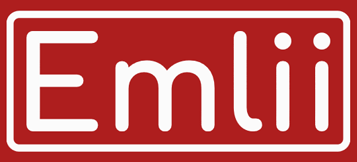
Strategies for Reducing Software Costs in Your Business
Software plays a pivotal role in running modern companies. But between purchasing licenses and paying ongoing fees, business software costs can really add up. Top applications like Salesforce or Microsoft Office 365 do not come cheap, especially for larger organizations.
With businesses spending over 20% of their IT budgets on enterprise software, it is worth exploring ways to optimize these expenses. Smart software management strategies can reduce licensing and support costs over time.
Consolidate Software Vendors

Aim to consolidate software solutions around fewer strategic vendors. Maintaining a diversity of niche software tools from an array of providers leads to extra expenses. Identify priority vendors aligned to your long-term business goals and merge other functionalities into their platforms when possible.
For example, extending your CRM system like Salesforce to cover marketing automation functionality through add-ons can help you avoid paying for separate niche tools. Reducing the number of software vendor relationships lowers procurement and account management overheads.
Centralize License Management
Many enterprises struggle with visibility into what software they actually have installed across a multiplicity of systems and users. Decentralized software deployments lead to unused licenses and shelfware, which means paid for licenses going to waste.
Building a centralized software license management system provides insights into license utilization. It allows you to optimize the reuse of licenses by reallocating unused or under-used entitlements to other applications or users. Rightsizing license deployments reduces software spending without affecting employee productivity.
For example, closely tracking Salesforce license usage could reveal inactive users that could have licenses reclaimed for other needs.
Renegotiate Support Contracts

Ongoing technical support and version upgrade contracts account for a major portion of long-term software costs. Over years of accumulated renewals, support fees can eclipse initial license purchase prices.
Review the value of existing support contracts relative to actual usage and need. Determine if any niche solutions used minimally might forgo comprehensive upgrades and support services. Consider tiered support levels at varying prices for different priority applications.
Actively negotiating with incumbent vendors often yields discounted support renewal pricing as well. Discounting incentives tend to increase for longer multi-year contracts, trading off higher short-term expenses for long-term savings.
Explore SaaS Alternatives
Traditionally licensed software requires upfront capital expenditure and ongoing support costs. By contrast, SaaS (Software-as-a-Service) solutions provide flexible subscription plans and offload IT infrastructure burdens to vendors.
Evaluating the SaaS model for business systems can shift software from a fixed to variable cost. For example, Salesforce provides CRM functionality for a transparent per-user monthly fee. SaaS spending scales up and down based on real employee usage patterns.
The pay-as-you-go nature of SaaS allows businesses to cost effectively experiment with new technologies too. With easier adoption and decommissioning, companies avoid long-term commitments to unused shelfware.
Software Audits Are Not All Bad

No one welcomes news of a pending software audit. But while the process feels disruptive, audits can provide useful visibility into actual software deployments across an organization. Audits serve as a forcing function for IT departments to centralize tracking of licenses purchased, installed, and used in various systems.
Having an accurate inventory supports the optimization of license reallocations and consolidations. And demonstrating optimized configurations can help achieve audit settlements favorable to the business. So according to the people at Miro Consulting, while audits might be dreaded, they can actually support better Salesforce license management and lower software costs overall.
Conclusion
Given most companies’ reliance on software and SaaS solutions, better managing these expenses aligns with operational best practices. Centralizing oversight of software spending empowers cost reducing strategies around vendor consolidation, streamlined renewals management, and licensed optimization.




